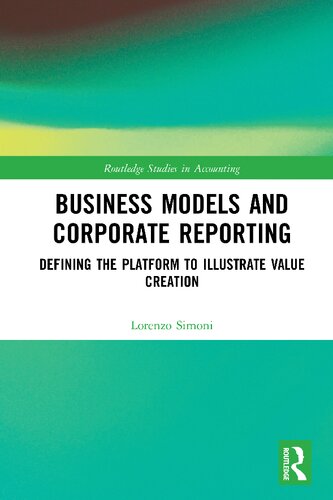

Most ebook files are in PDF format, so you can easily read them using various software such as Foxit Reader or directly on the Google Chrome browser.
Some ebook files are released by publishers in other formats such as .awz, .mobi, .epub, .fb2, etc. You may need to install specific software to read these formats on mobile/PC, such as Calibre.
Please read the tutorial at this link: https://ebookbell.com/faq
We offer FREE conversion to the popular formats you request; however, this may take some time. Therefore, right after payment, please email us, and we will try to provide the service as quickly as possible.
For some exceptional file formats or broken links (if any), please refrain from opening any disputes. Instead, email us first, and we will try to assist within a maximum of 6 hours.
EbookBell Team

4.8
34 reviewsThis book discusses the role of business models in corporate reporting. It illustrates the evolution of non-financial reporting, the importance of business model reporting, and the main conceptualisations of business models. It also offers a methodological contribution to the assessment of business model reporting. Finally, it discusses the main implication of business model reporting for different categories of subjects and some challenges related to this kind of disclosure.
Readers will understand the role of business models in the non-financial reporting landscape. They will also gain an understanding of how business models can help users of the annual report contextualise other non-financial items disclosed. However, effective business model reporting implies paying attention to certain features that define its quality. This theme is discussed in the empirical part of the book and in the section devoted to implications for preparers, users, and regulators.
As large companies in the EU and the UK have to disclose the business model in the annual report, this book will be of interest to preparers and users of financial statements, regulators involved in the ongoing non-financial regulatory process, and professional bodies. It will also be of interest to academics interested in the investigation of non-financial reporting.